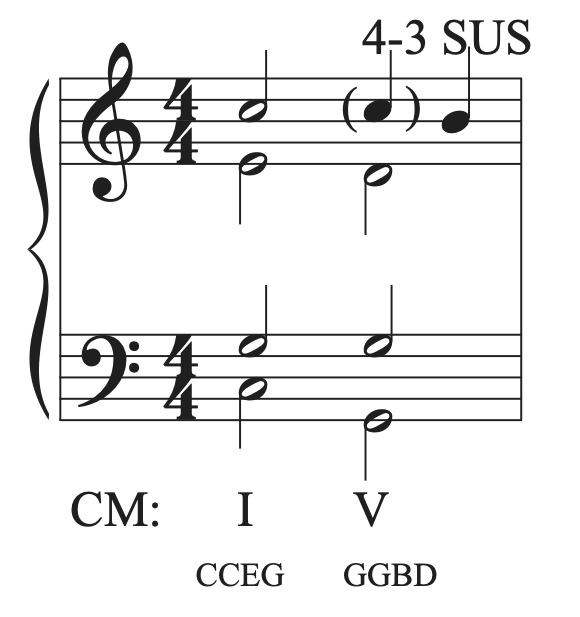10.2 Part Writing, Root Position Triads and Suspensions: Theory exercises
In addition to Workbook Chapters 10.2.1, 10.2.2, 10.2.3, 10.2.4, and 10.2.5, see the examples below.
Now that we are familiar with root position part writing guidelines, let’s look at some part writing examples. A summary of the part writing steps outlined in the examples is included at the end of the examples section.
Example 1
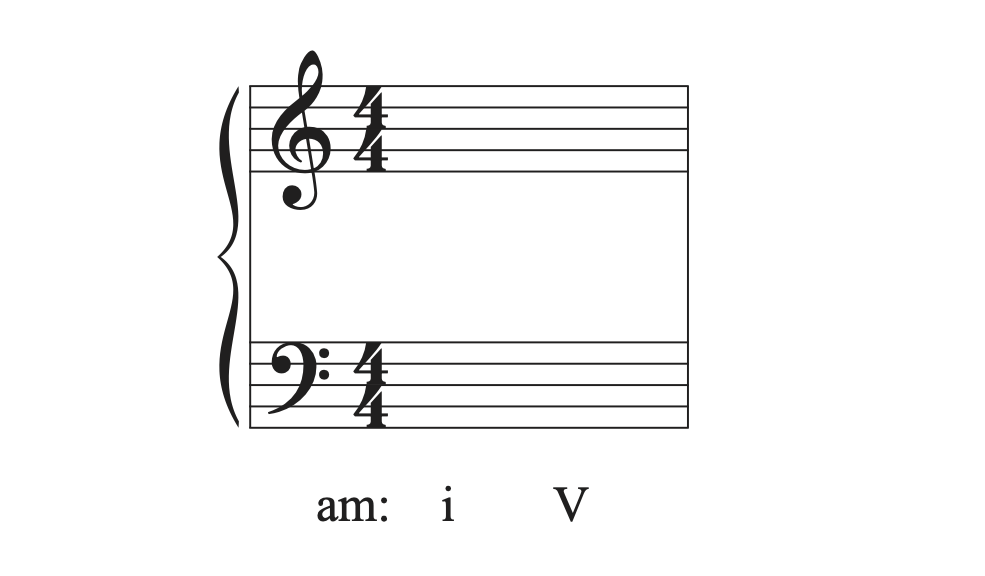
In this first example, we will be part writing a i-V progression in a minor key using common tones. First, write the notes possible in each chord with the correct doubling. Make sure to raise the leading tone in the V chord.

Next, find a good spacing for the first chord. Choose pitches that create a more open spacing between notes in order to allow freedom to move without voice crossing or overlap. Remember to work within the range of each voice outlined in the guidelines for voicing chords in four voices. We want the soprano to move as stepwise as possible, so plan to use a soprano pitch that will be able to move by step to the next chord. Remember that the bass voice has the most flexibility to move, so you can change the octave of the pitches if needed in order to avoid errors. Check for spacing and double errors before moving on.
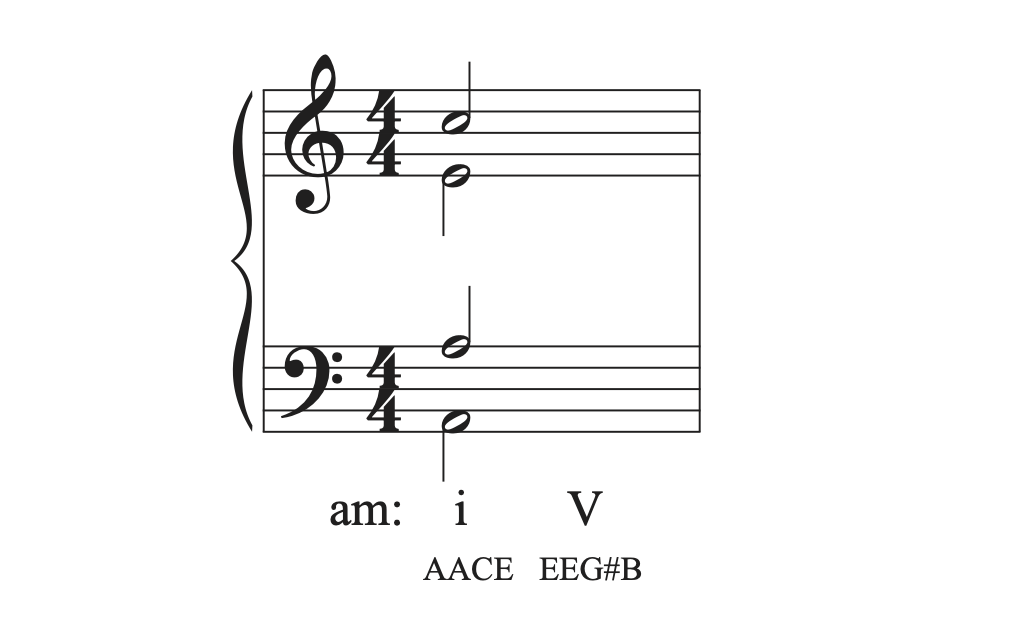
Common tones help to create smooth connections between chords. The next part writing step is to find any common tones between chords and write them in.
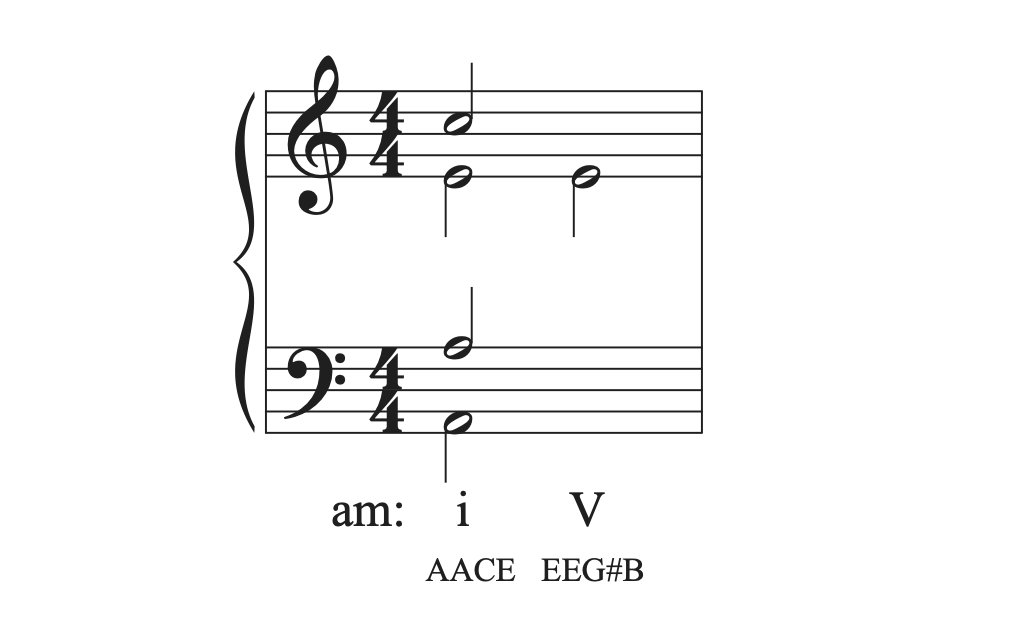
To complete the chord progression, find the smoothest, most stepwise connection between each pitch and the same voice in the next chord. Once the chords are complete, remember to always check for part writing errors.
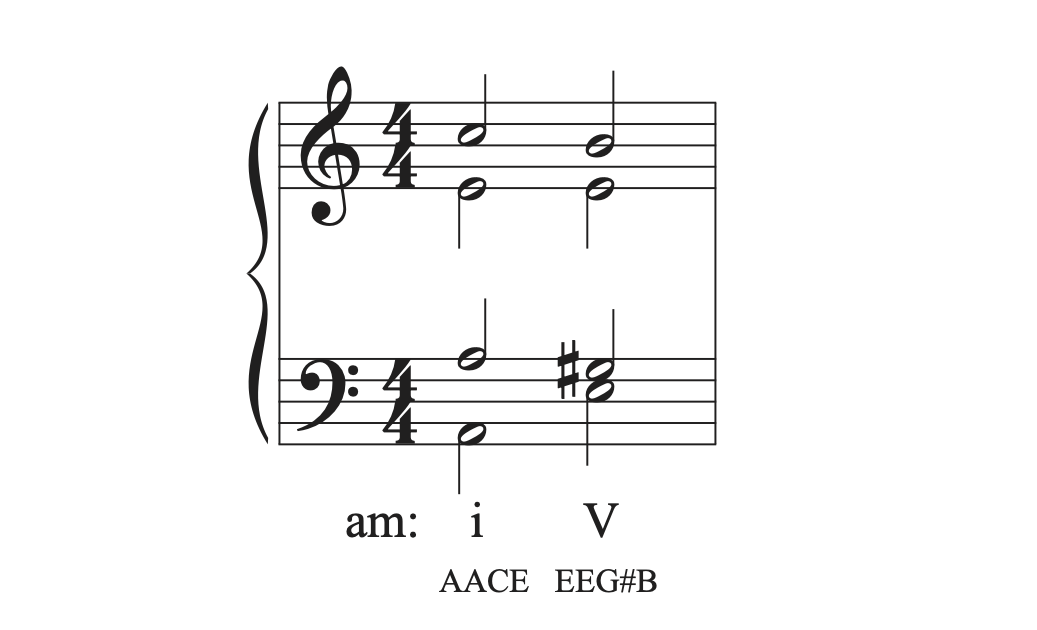
Example 2
The second example connects chords that have no common tones.
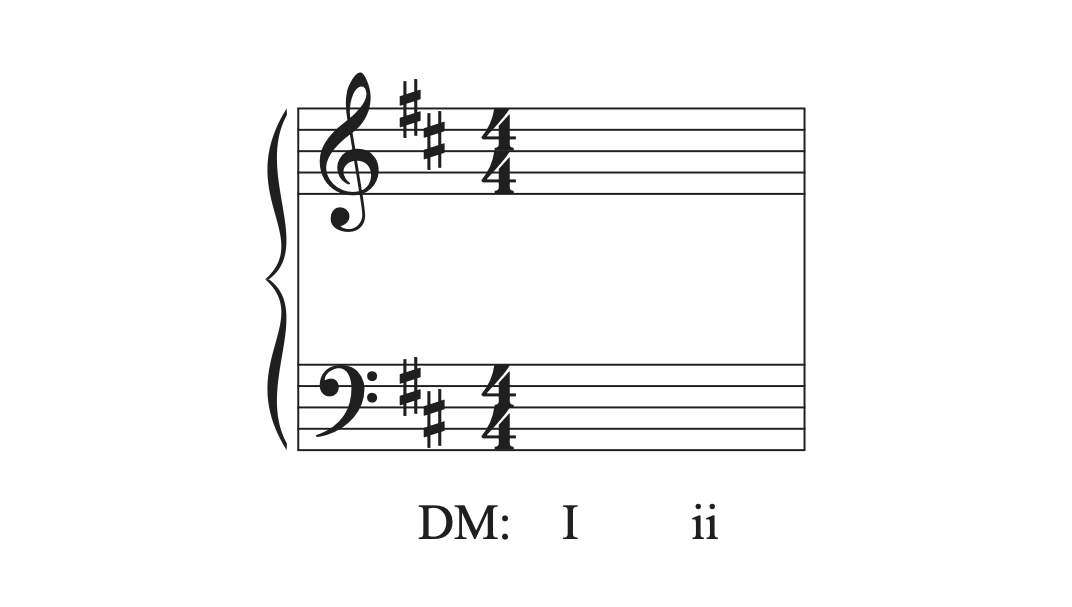
We are in the key of D major and will be connecting I to ii. Step 1 is to write out the notes in each chord with the proper doubling.
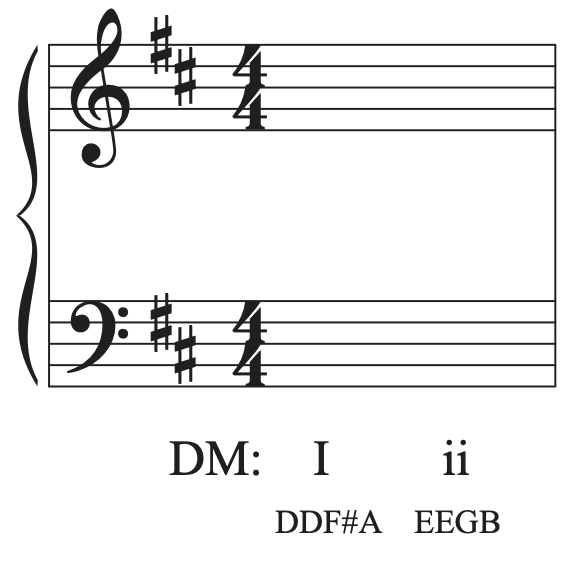
Next, we want to build the first chord using generous spacing between voices while keeping voices in their respective ranges. Check for doubling and spacing errors before moving on.

Now we can connect the I chord to the ii chord. Because the chords share no common tones, the best practice is to move all voices in contrary motion to the bass. The bass is ascending, so the upper voices will descend to the next closes chord tones. Once you complete the chord, make sure to check for part writing errors.
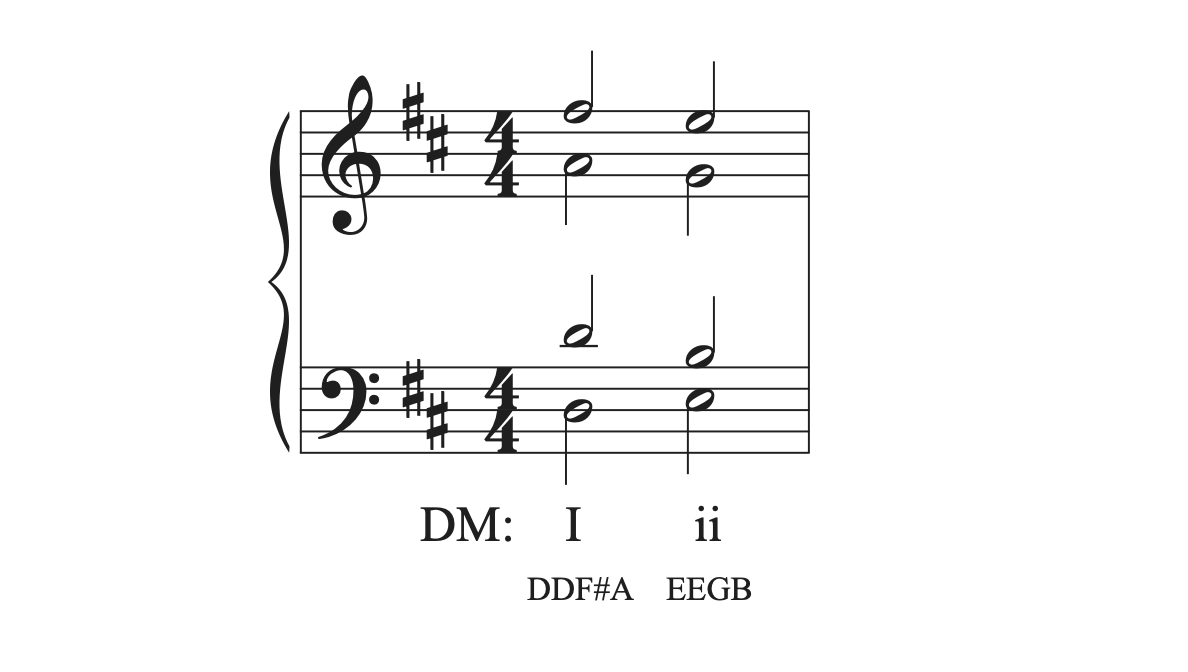
Example 3
The third example looks at part writing for V-vi motion.
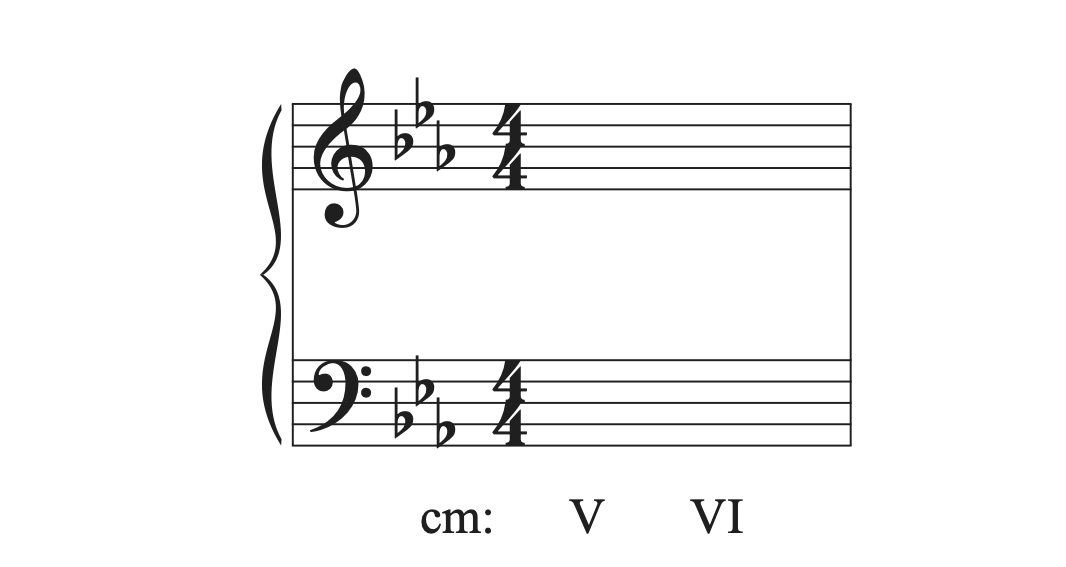
We are in the key of C minor using V-VI chords. Write the notes in each chord along with the proper doubling. Remember, in a V-VI progression, the 3rd in the VI chord is most often doubled to avoid part writing errors.

Next, we will build the first chord using generous spacing between voices while keeping voices in their respective ranges. Check for doubling and spacing errors before moving on.
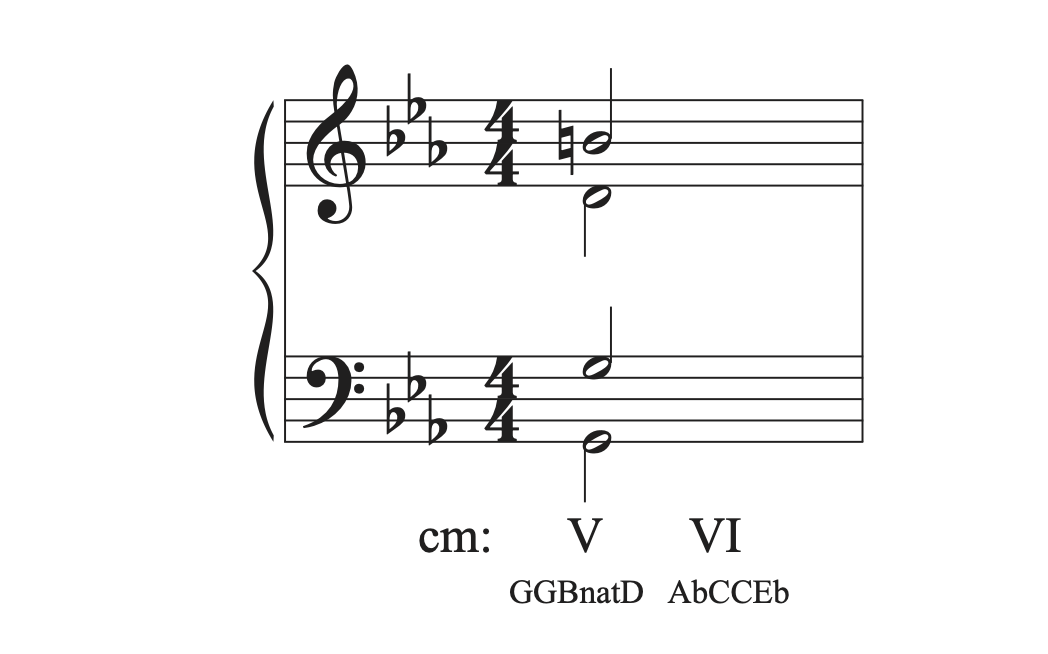
We can now part write the remaining voices. Scale degree 7 in the V chord moves in parallel motion with the bass, resolving to scale degree 1. The other two voices move down, contrary to the bass to the next closest chord tones. Remember to check for part writing errors.
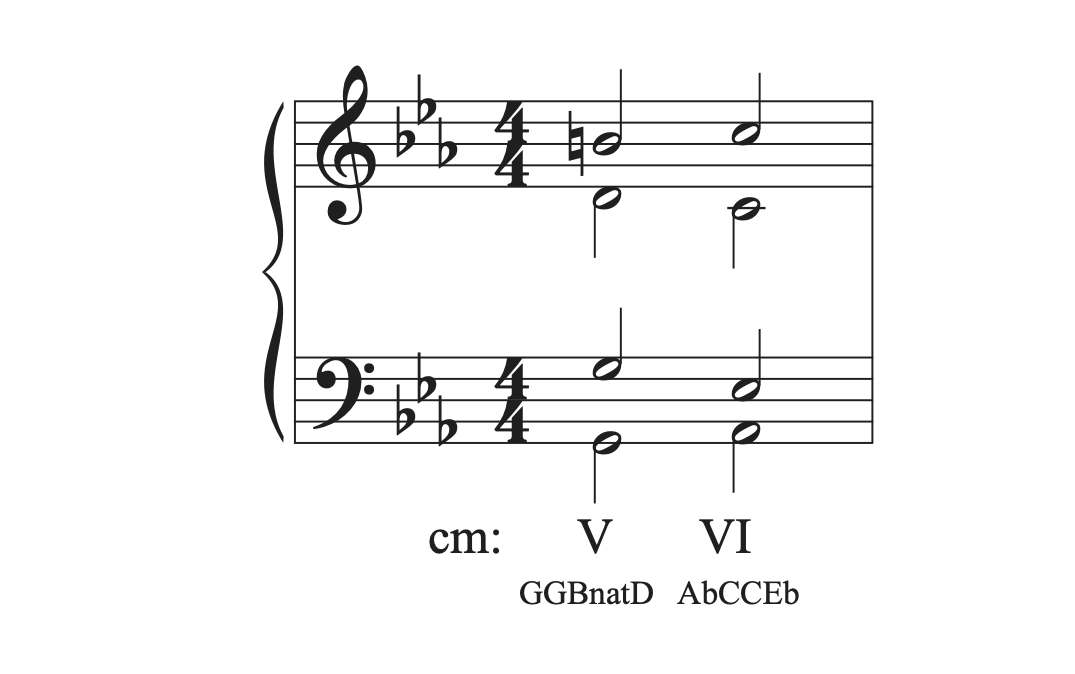
Example 4
This example uses a 9-8 suspension.
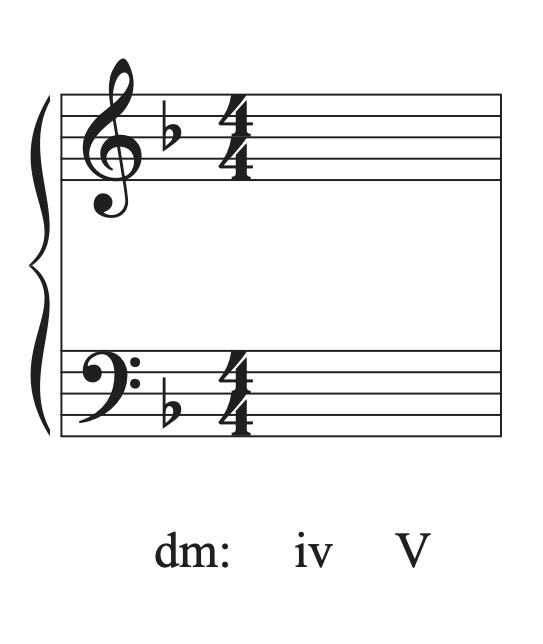
In this example, we will be building a iv-V progression in d minor, then adding a 9-8 suspension. Just like with all other root position part writing examples, we will follow the part writing steps outlined in the summary of part writing steps. First, we will write the name of the notes in each chord along with their proper double and any needed accidentals.
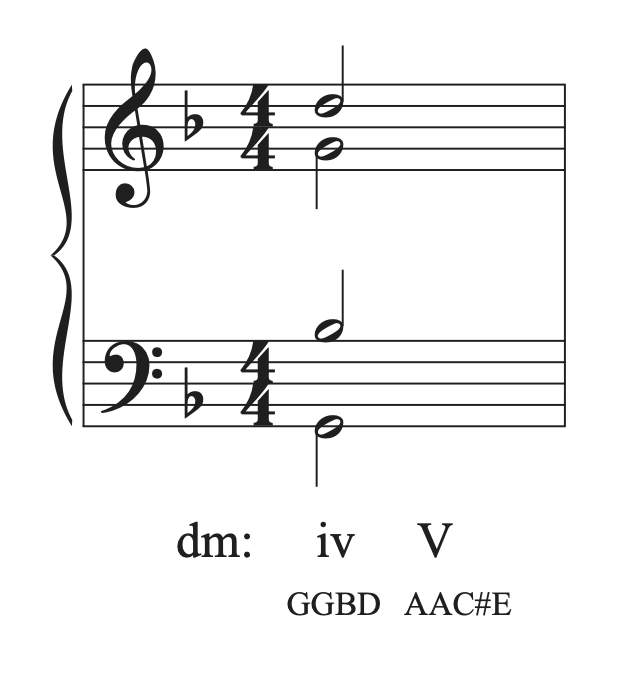
Then, we will build the first chord, and connect it to the second chord. Note that these chords do not share common tones, so all upper voices will move in contrary motion with the bass. Once the chords are complete, remember to check for part writing errors.
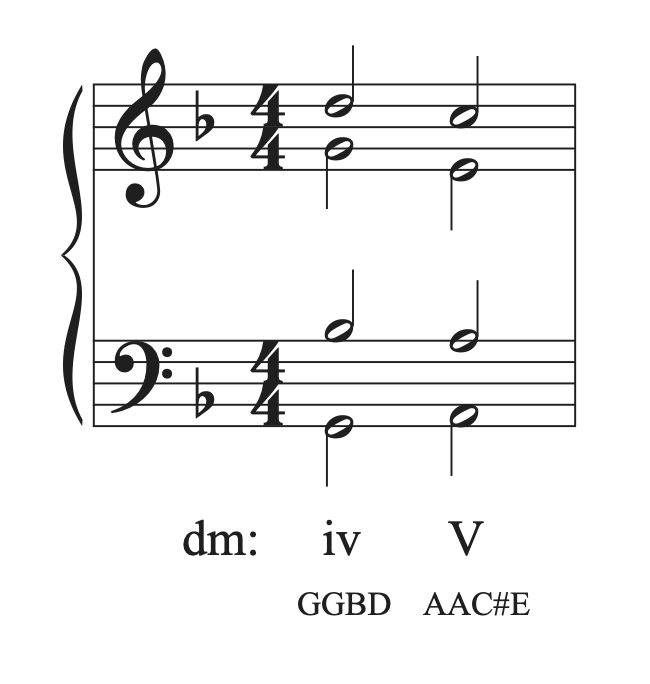
Now we can add in a 9-8 suspension. To do that, we need to remember that suspensions are notes that are held over from a previous chord. That means that the suspension must be placed on beat 3, when the chord changes so that it can resolve to a chord tone on beat 4. Then, we need to figure out which voice will have the suspension added to it. The numbers 9-8 tell us that the suspension will form the intervals of a 9th with the bass on the suspended note, and then an octave with the bass on its resolution. Looking at our example, we want to find the voice in the second chord that forms an octave with the A in the bass voice on beat 3. The only voice that forms an octave with the bass is the tenor voice. So, that’s the voice that will get the suspension. When the A is suspended on beat 3, it forms a 9th above the bass, that resolves to an octave above the bass when the suspension resolves down by step.
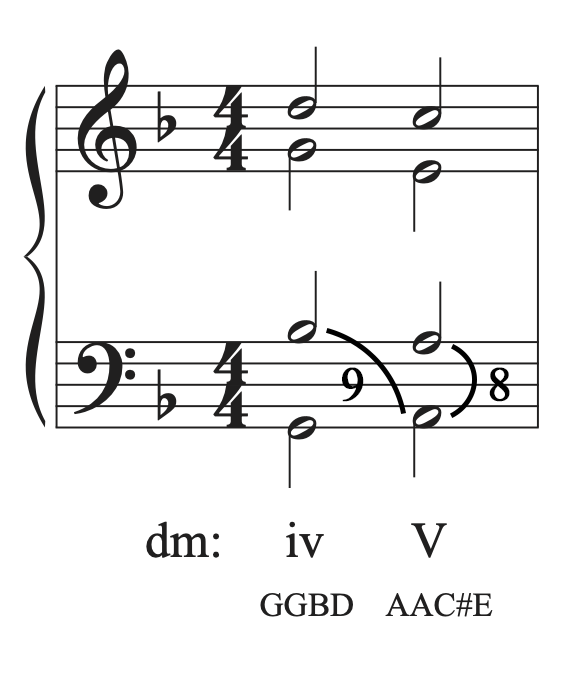
Once the correct voice has been identified, the suspension can be placed. Remember that suspensions must occur on a strong part of the beat in comparison to their resolutions. Remember to check the rhythm to make sure you have the correct number of beats in the bar. Make sure that all notes line up vertically according to their rhythmic placement in the bar. Suspension can be tied or articulation, so unless indicated, the choice is up to you. Once the suspension has been placed, put the non-chord tone in parenthesis and label the suspension with its number.
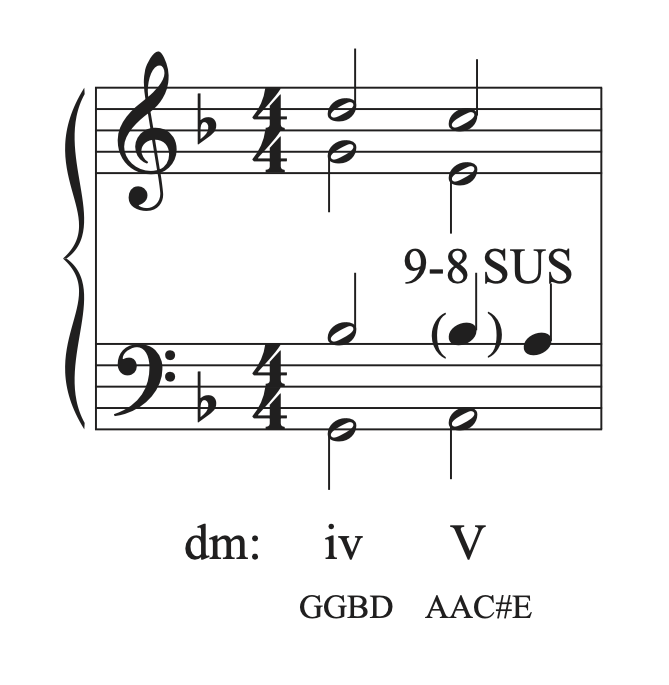
Example 5
We will follow the same steps when part writing using a 4-3 suspension.
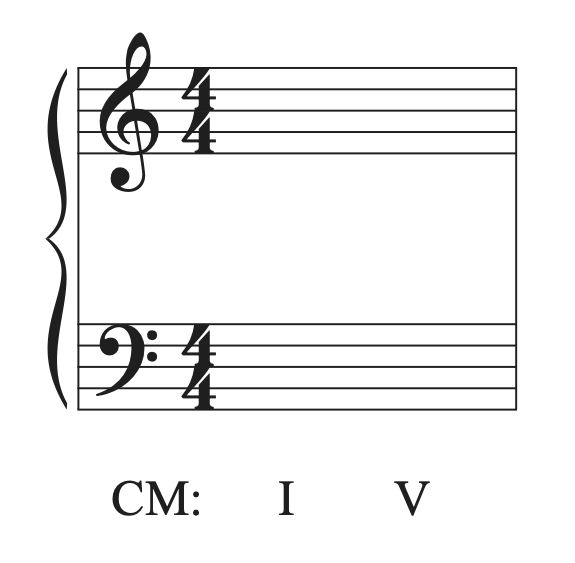
We will be writing a I-V progression in C major with a 4-3 suspension. First, notate the notes used in each chord with correct double and accidentals.
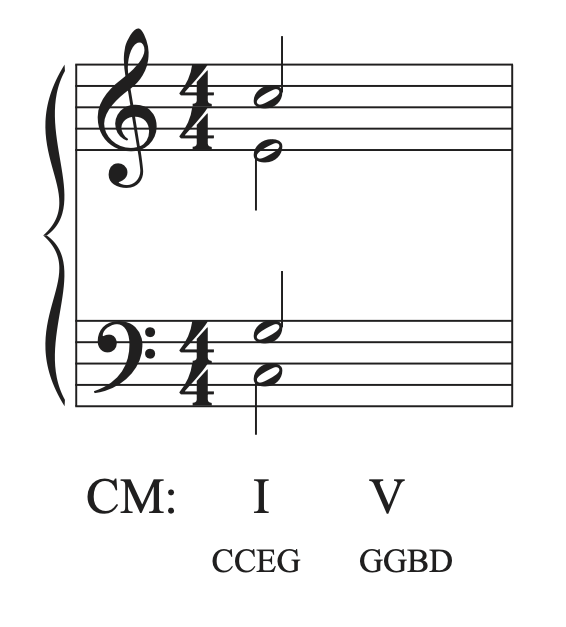
Then, build the first chord and connect it to the second chord, following correct part writing steps and guidelines. These chords share a common tone and all other voices will move as stepwise as possible. Once the chords are complete, remember to check for part writing errors.
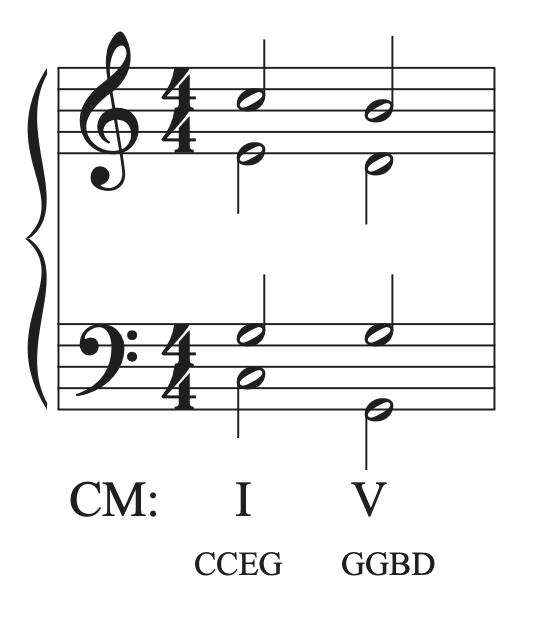
Now we can add in a 4-3 suspension. Remember, the key to find the voice that will form the correct suspension is to look at the bass voice for the second chord, and find the upper voice note that creates the resolution number of the suspension (the second number in the suspension name). Looking at our example, we need a 3rd above the G in the bass, which is a B. The voice that has the B is the soprano voice. Remember to check that the soprano voice in the chord before is a step higher than the B so that it can be suspended and resolve down by step to the B.
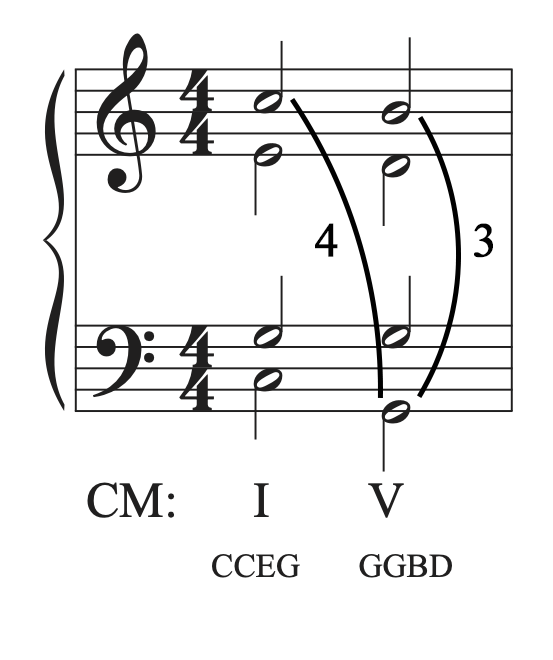
Next, insert the suspension. Check that the rhythm makes sense with the number of beats in the bar and that the chords all line up vertically according to the rhythm in the bar. Then, label the suspension by putting the non-chord tone in parenthesis and writing 4-3 SUS next to the suspended note.
